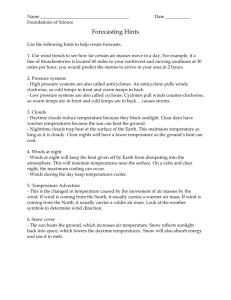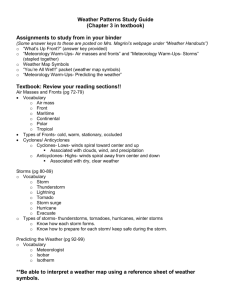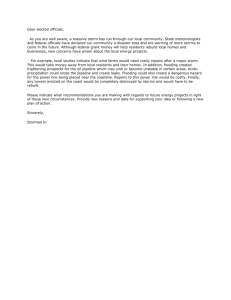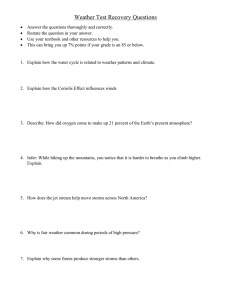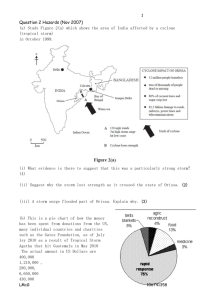Climate Change Impacts on International Transport Networks Joint UNECE-UNCTAD Workshop:
advertisement
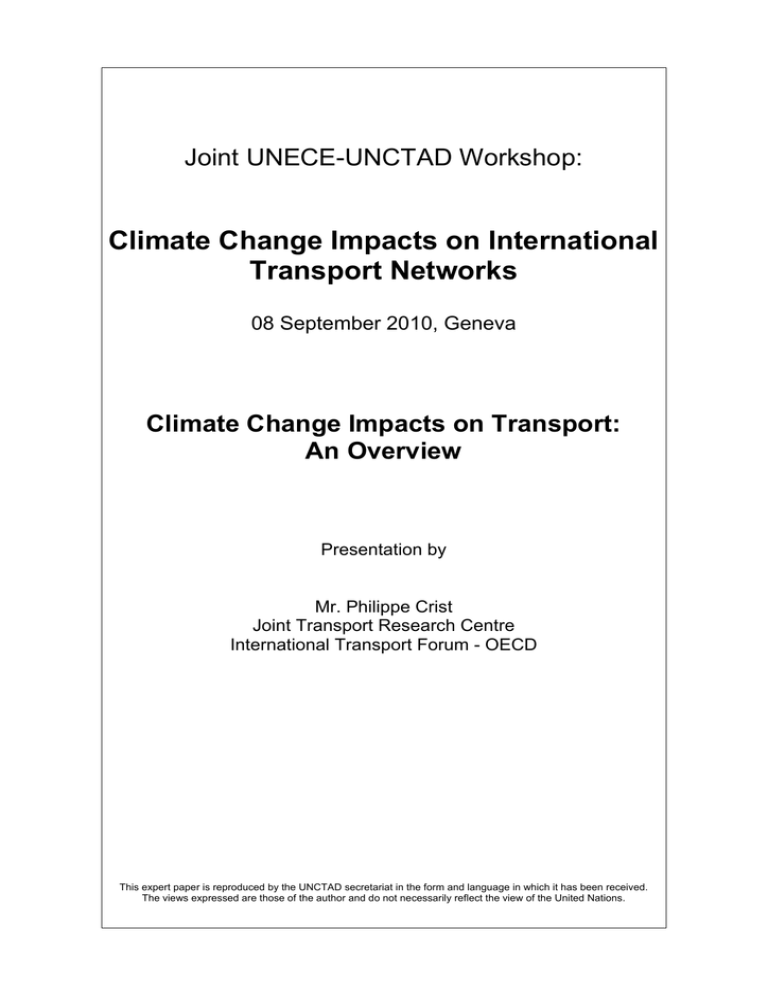
Joint UNECE-UNCTAD Workshop: Climate Change Impacts on International Transport Networks 08 September 2010, Geneva Climate Change Impacts on Transport: An Overview Presentation by Mr. Philippe Crist Joint Transport Research Centre International Transport Forum - OECD This expert paper is reproduced by the UNCTAD secretariat in the form and language in which it has been received. The views expressed are those of the author and do not necessarily reflect the view of the United Nations. Climate Change Impacts on Transport: An Overview Outline: Uncertainty Impacts Policy-making principles Not covered (but crucial!): Costs Climate change impacts on transport/trade flows In-depth discussion of adaptation measures Philippe Crist, Joint Transport Research Centre International Transport Forum – OECD UNCTAD-UNECE Conference on Climate Change Impacts on International Transport Networks, Geneva, 8 September 2010 Climate vs. Weather Radiative Forcing Climate is how the atmosphere "behaves" over relatively long periods of time. Atmospheric Concentrations Weather relates to atmospheric conditions over a short period of time (localised). Climate Change Increasing Uncertainty Increasing uncertainty Emissions Increasing Policy Relevance Increasing policy relevance Human Activity Infrastructure Constr. & Maintenance Planning Process Infrastructure planned and built with past climate and weather in mind – no longer a good predictor of future conditions GHG Emission – Impact Pathway Impact Vectors: Global vs. Regional Changing Regional Temperature Project concept Planning Horizon Global Temperatur e Rise Design and engineering Facility Life Increasing Severity of Climate Impacts Construction 0 Source: CCSP 2008 10 20 30 40 50 Years 60 70 80 90 100 Strength & Frequency of Wind/Storm s Changes in Precipitatio n Impacts of Climate Change Damages, Benefits Global Temp. Change Global Temperature Change (1/2) Sea level rise (& tidal/storm surges) Global Temp. Change •Road, rail, inland waterway and air infrastructure vulnerable because of location •Exacerbates subsidence and salinity (corrosive effect on infrastructure) •Erosion, road/railbed collapse, runway and road surface damage •Temporarily or permanently renders some infrastructure unusable (Quays, waterways under bridges, etc.) •Scouring/weakening of critical infrastructure support (bridge pilings, levees, etc) Changing Regional Temperatures (1/3) Increased temperatures and heat waves Sea level rise (& storm surges) •Damage to critical drainage infrastructure •Intermittent or permanent flooding Changing Regional Temps. Global Temperature Change (2/2) Changing Regional Temps. Changing Regional Temperatures (2/3) Increased temperatures and heat waves •Buckling/fissuring of road and runway asphalt, buckling of rails impact network performance. •Vehicle overheating and accelerated tire degradation for road transport, •Damage to concrete and bridge expansion joints. •Degraded electricity transmission impacts rail services. •Drought and prolonged evaporation from navigable waterways can render these unnavigable. •Increased AC requirements impacts fuel economy •Lower air density reduces permissible payload weights for aircraft – or calls for longer runways and changes in climb patterns. Changing Regional Temperatures (3/3) Fewer cold days and shorter winters •Reduced snow removal but increased freezethaw degradation of asphalt , substructures •Less ice-disruption of inland waterways but reduced operation of regionally important snow and ice roads •New shipping routes may deliver significant time gains in Asia-EU and Asia-N. America trades (old routes impacted as well) Changing Regional Temps. Transport Infrastructure Vulnerable Opening of Arctic Sea Passages: to Permafrost Melting Gains in Travel Time yellow lines=winter trails blue lines=railroads red dots=airfields Changing Regional Temps. Changing Regional Temperatures (3/3) Fewer cold days and shorter winters Precipitatio n •Reduced snow removal but increased freezethaw degradation of asphalt Increase in extreme precipitation •May overwhelm drainage infrastructure •Erosion, scouring, slope failure, rapid sedimentation (dredging) •Less ice-disruption of inland waterways but reduced operation of economically important snow and ice roads Decrease in precipitation •Decreased soil moisture leads to subsidence of road and rail beds •New shipping routes may deliver significant time gains in Asia-EU and Asia-N. America trades •Lowers inland waterway levels, •Permafrost upheaval damaging to critical northern road, pipeline and air infrastructure Wind/Storm s Changing Precipitation Patterns (1/1) •Summer wildfires can lead to denuded soils prone to slope failure under rain Extreme Wind and Storms Policy Implications Increase in frequency/strength of storms •3 adaptation strategies: Avoid (retreat), Protect and/or Accommodate •Warming compounds natural variation and may contribute to more frequent and/or stronger storms. • Network unreliability impacts at least as great as physical impacts on infrastructure. •Storm surge damage to infrastructure, damage from increased wave height and strength • Prioritisation on network-essential infrastructure important – different strategies for different parts of the network •Wind damage to bridges, gantries, signs, electricity networks, radars and lighting. • Design standards and practices must account for increased uncertainty re. climate •Wind reduces airport operations – long-term shifts in wind patterns may render runway orientation sub-optimal Thank You… • Focus on robustness for key infrastructure as well as network redundancy and resilience Global Warming: Sea Level Rise Certainty Probability Virtually certain ≥99% Regional Temperature Changes • Decreases in very cold days Virtually certain ≥99% • Increases in Arctic Temps. Virtually certain ≥99% • Later onset of freeze, early onset of thaw Virtually certain ≥99% • Increases in very hot days/heat waves Very likely ≥90% Precipitation Changes • Increase in extreme events Very likely ≥90% • Increase in drought Likely ≥66% • Change in patterns/seasons Likely ≥66% Storms • More intense/frequent hurricanes/typhoons Likely ≥66% • More intense cold-season storms, with more intense/frequent winds, waves, surge Likely ≥66% Sea Level Rise and Coastal Infrastructure: Bridges and Waterways
